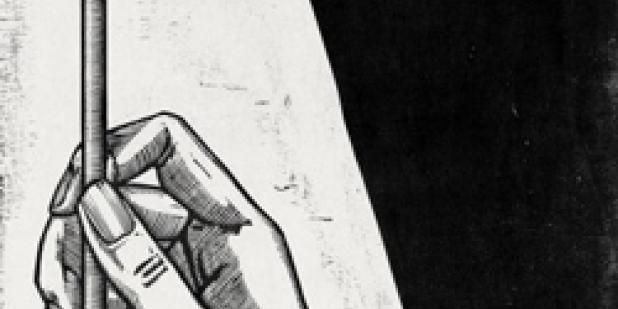Happy Lunar New Year from the USC US-China Institute!
Calligraphy in Chinese and Japanese Art
In both China and Japan, calligraphy is regarded as the highest form of visual art, even more highly esteemed than painting. This is because the reading and writing of Chinese characters (kanji in Japanese) was expected of members of the imperial family and the nobility, the aristocracy, Buddhist clergymen, and all well-educated persons. In both countries, the art of writing is deeply connected to ideals of self-cultivation, knowledge of classical texts, and expressions of high culture.
Where

Several major styles of calligraphy were used by the Chinese and later adopted by the Japanese. These include seal script, clerical script, running script, regular script, semicursive script, and cursive script. Though faster to write than the other styles, primarily functioning as shorthand, cursive script is difficult to read for those unfamiliar with it. Those who can read standard or printed forms of Chinese may not be able to comprehend this script. Its vitality, however, can still be purely appreciated as an art form.
This exhibition showcases works by two famous Chinese monks of the Huangbo Chan sect of Buddhism who emigrated to Japan in the 17th century and who became important patriarchs of the Obaku Zen sect in their adopted country: Calligraphy of a Seven-Character Quatrain in Cursive Script of 1673 by Yinyuan Longqi (Ingen Ryuki; 1592–1673) and Calligraphy of Five-Character Zen Phrases in Semicursive Script, written sometime between 1678 and 1692 by Gaoquan Xingdun (Kosen Shoton; 1633–1695). Chinese calligraphy of the 18th century is represented through a rubbing mounted as a hanging scroll, Imperial Poem on One of the Forty Views of the Yuanmingyuan in Running Script by Wang Youdun (1692–1758) in the style of the Qianlong emperor (1711–1799; reigned 1736–1795). Japanese calligraphy of the mid-19th century is exemplified by a pair of six-panel folding screens, Calligraphy of a Shi Poem by Li Bo in Cursive Script and a Ci Lyric by Su Xiang in Cursive Script of 1850 by Nukina Kaioku (1778–1863). Also displayed are a brush once used by the Chinese artist Zhao Zhiqian (1829–1884) and two brushpots, one made of porcelain with a long poetic inscription written in underglaze blue, and the other of zitan wood with the engraved clerical-script calligraphy of Yu Minzhong (1714–1779), bronze with gilding, cloisonné enamel, and wire inlays.
Curated by Philip Hu, associate curator of Asian art, Calligraphy in Chinese and Japanese Art is on view in Gallery 225 from September 12, 2014 through February 22, 2015.
Featured Articles
We note the passing of many prominent individuals who played some role in U.S.-China affairs, whether in politics, economics or in helping people in one place understand the other.
Events
Ying Zhu looks at new developments for Chinese and global streaming services.
David Zweig examines China's talent recruitment efforts, particularly towards those scientists and engineers who left China for further study. U.S. universities, labs and companies have long brought in talent from China. Are such people still welcome?






